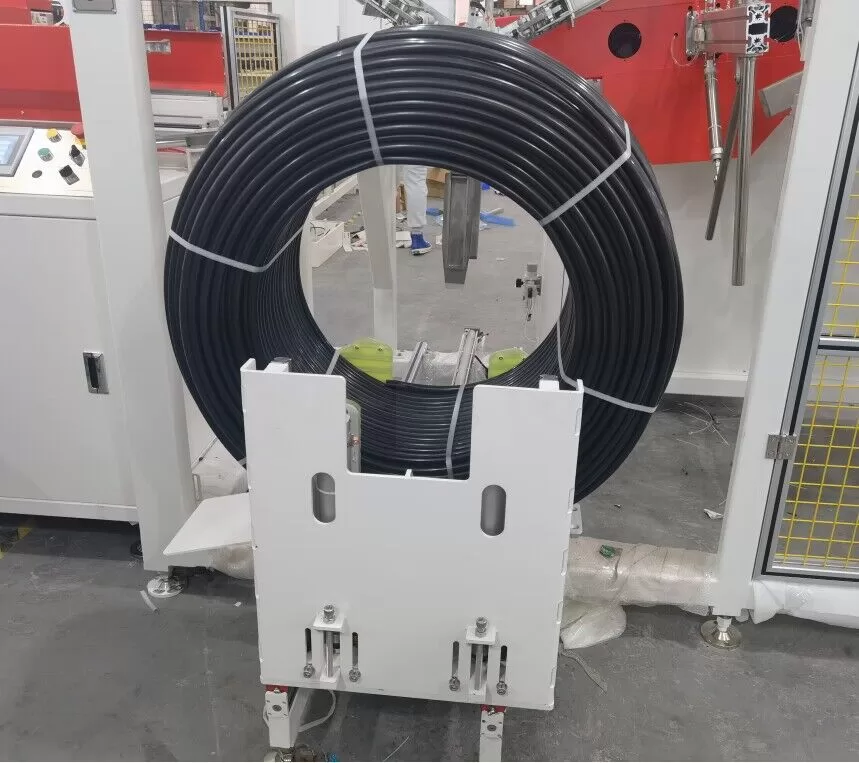Enhancing Production with Numerical Control & Automated Cable and Hose Coiling Machines
In modern manufacturing and packaging environments, efficiency, consistency, and precision are crucial for success. Manual or semi-automatic methods for handling and coiling materials like cables, hoses, and pipes often fall short, leading to bottlenecks, inconsistencies, and increased labor costs. Automated cable and hose coiling machines, particularly those leveraging Numerical Control (NC) technology, offer a robust solution to these challenges. These systems streamline the coiling process, integrating seamlessly into production lines and delivering significant operational advantages.
This article delves into the workings, benefits, and applications of numerical control and automated cable and hose coiling machines, highlighting their role in optimizing production across various industries.
How Automated Coiling Machines Operate
Automated coiling systems are designed to replace manual handling, enhancing speed and accuracy in winding flexible materials into neat coils. The typical process involves several key stages:
- Material Feeding: The cable, hose, or pipe is fed into the machine from an extruder, payoff stand, or other upstream equipment. Precise tension control mechanisms ensure smooth feeding without damaging the material.
- Length Measurement: Sophisticated sensors or encoder wheels accurately measure the length of the material being fed, ensuring each coil meets exact specifications.
- Coiling: The material is guided onto a coiling head or drum. NC systems control the traverse mechanism, ensuring the material is wound layer by layer in a precise pattern, creating stable and uniform coils. Parameters like coil inner diameter (ID), outer diameter (OD), and traverse pitch are programmable.
- Cutting: Once the specified length is reached, an automated cutting mechanism cleanly severs the material.
- Coil Handling (Optional Strapping/Binding): After cutting, the finished coil is automatically ejected or transferred. Many systems integrate automatic coiling and strapping systems, which apply straps or other binding materials to secure the coil before it moves downstream for packaging or storage.
The integration of Numerical Control (NC) allows for precise, repeatable control over all machine parameters via a user-friendly interface. Operators can easily program and recall recipes for different product dimensions and coiling requirements.
Key Benefits of Automated Coiling Technology
Implementing automated coiling and strapping systems offers substantial advantages over traditional methods:
- Increased Efficiency and Throughput: Automation significantly reduces cycle times compared to manual or semi-automatic coiling, allowing extrusion lines or production processes to run at higher speeds without creating downstream bottlenecks. This directly translates to increased overall output.
- Improved Coil Quality and Consistency: NC precision ensures every coil has a uniform diameter, winding pattern, and length. This consistency improves handling, storage, and end-user satisfaction while minimizing material stress or damage during coiling.
- Reduced Labor Costs and Enhanced Safety: Automating the repetitive and physically demanding tasks of coiling and strapping frees up personnel for more complex, higher-value activities. It also reduces the risk of repetitive strain injuries and other safety hazards associated with manual handling.
- Material Waste Reduction: Accurate length measurement and precise cutting minimize material scrap, leading to cost savings and more sustainable operation.
- Operational Flexibility: NC systems can be quickly reprogrammed to handle a wide range of product diameters, lengths, and coiling specifications, providing the flexibility needed to adapt to changing production demands.
- Seamless Integration: These machines are often designed to integrate directly with extrusion lines, take-ups, and downstream packaging equipment, creating a fully automated production flow.

automatic pipe coiling machine, automatic hose coiling machine3 Applications Across Diverse Industries
Numerical control and automated coiling machines are indispensable in sectors that handle long lengths of flexible materials:
- Plastic Pipe Manufacturing: Coiling PE, PVC, HDPE, PEX, and corrugated pipes efficiently for plumbing, irrigation, drainage, and telecommunications applications.
- Cable and Wire Production: Handling power cables, data cables, fiber optic cables, and control wires for various industries.
- Hose Manufacturing: Coiling hydraulic hoses, pneumatic hoses, garden hoses, industrial tubing, and automotive fluid lines.
- Automotive: Coiling wires, cables, and hoses used in vehicle engines, transmissions, braking systems, and wiring harnesses.
- Aerospace: Producing coils of specialized wiring, fuel lines, and hydraulic hoses meeting stringent quality standards.
- Medical: Coiling small-diameter tubing for catheters, IV lines, and other medical devices requiring high precision and cleanliness.
- Electronics: Winding wires and small cables for components and assemblies.
Numerical Control& Automated Cable ,Hose Coiling Machine technology represents a vital step forward for manufacturers dealing with coiled products. By embracing automation and numerical control, companies can significantly enhance production speed, product quality, and operational efficiency while reducing costs and improving workplace safety. As industries continue to demand higher throughput and tighter tolerances, the role of these advanced coiling systems will only become more critical.